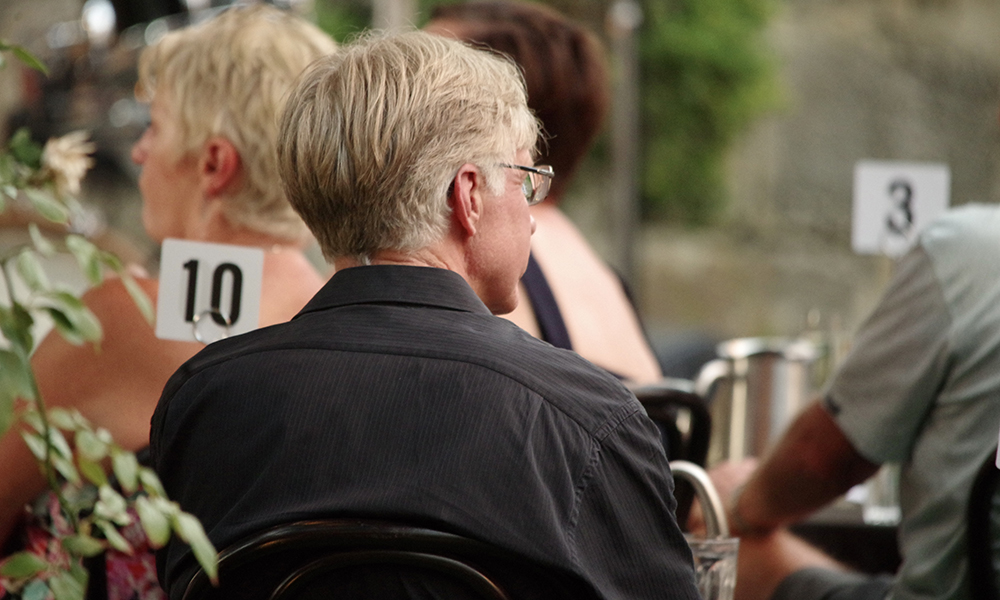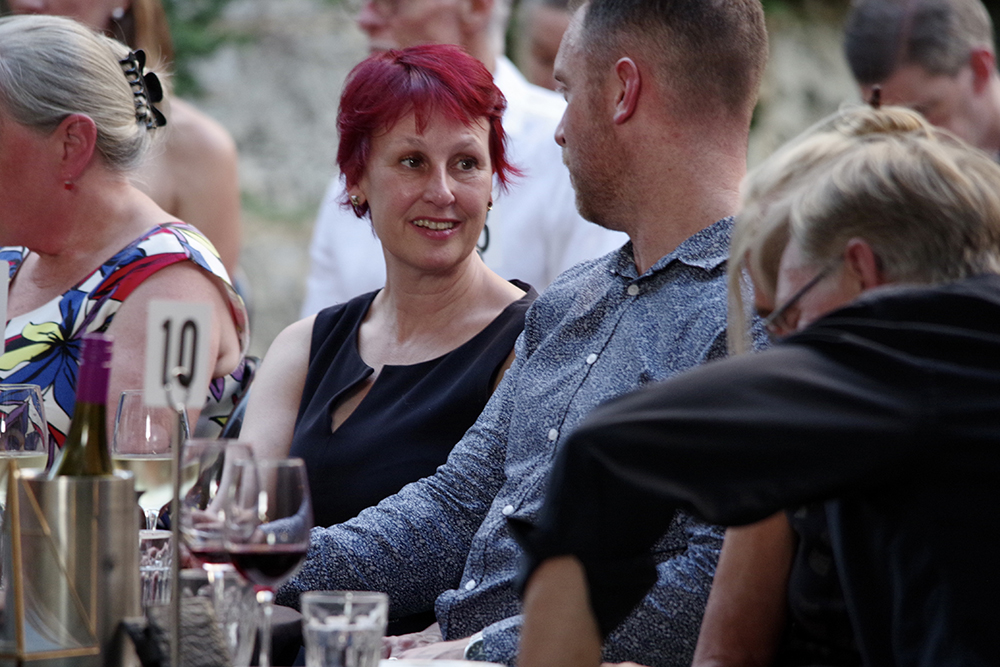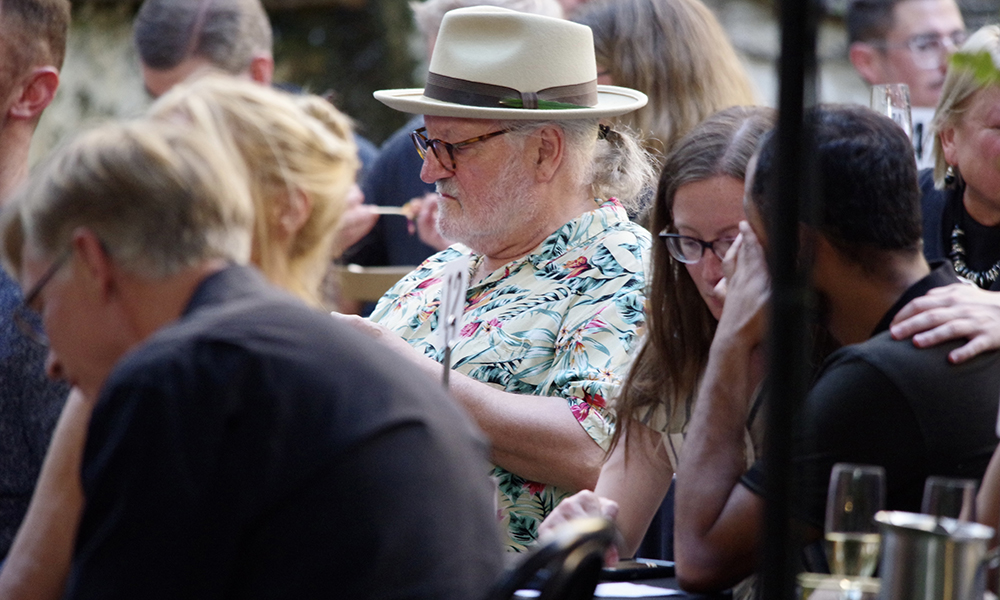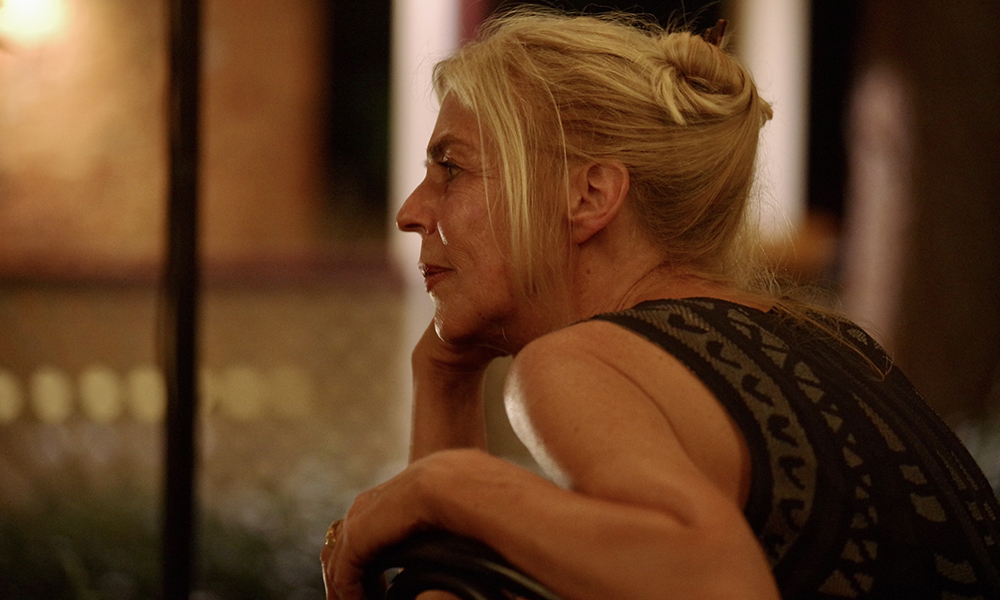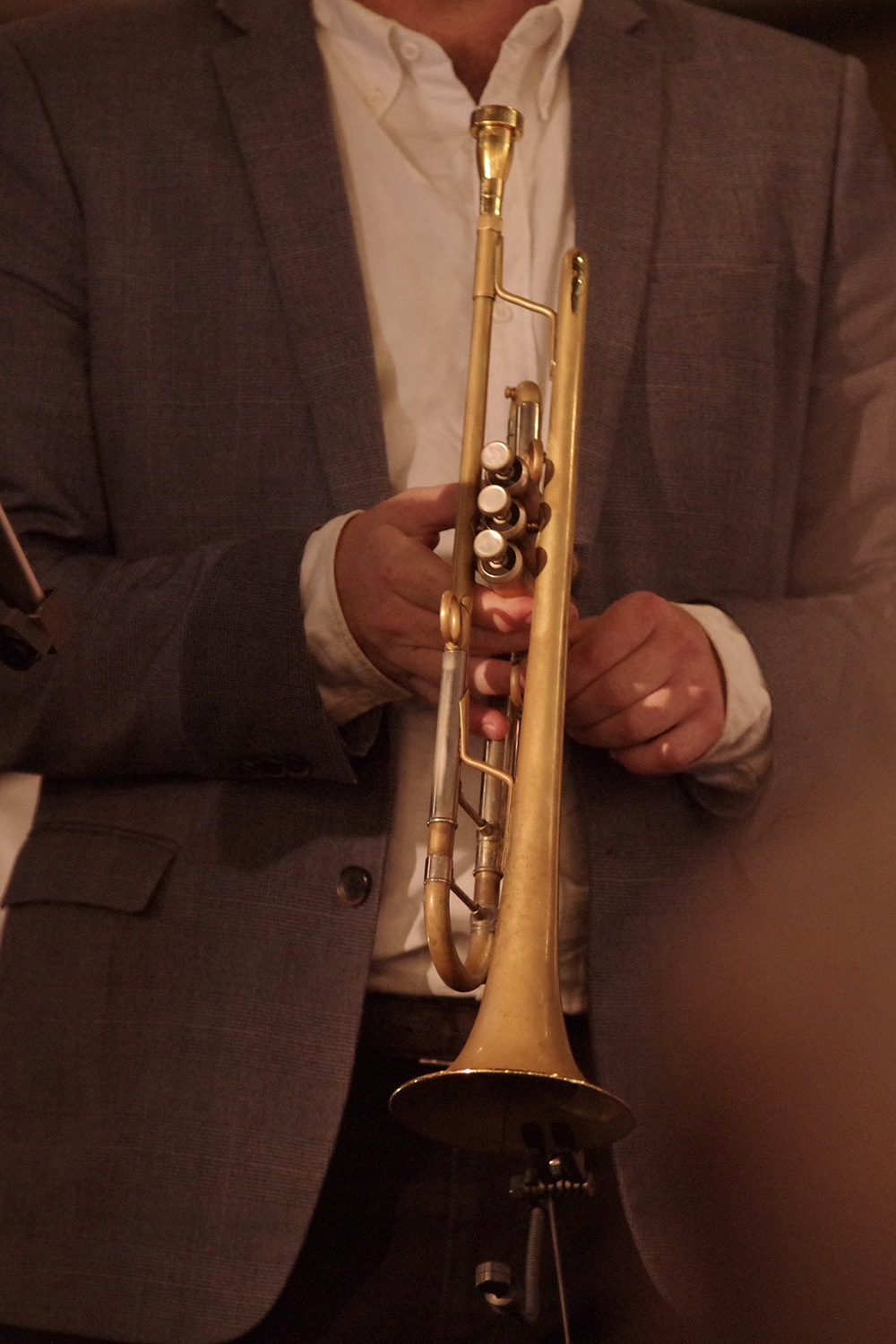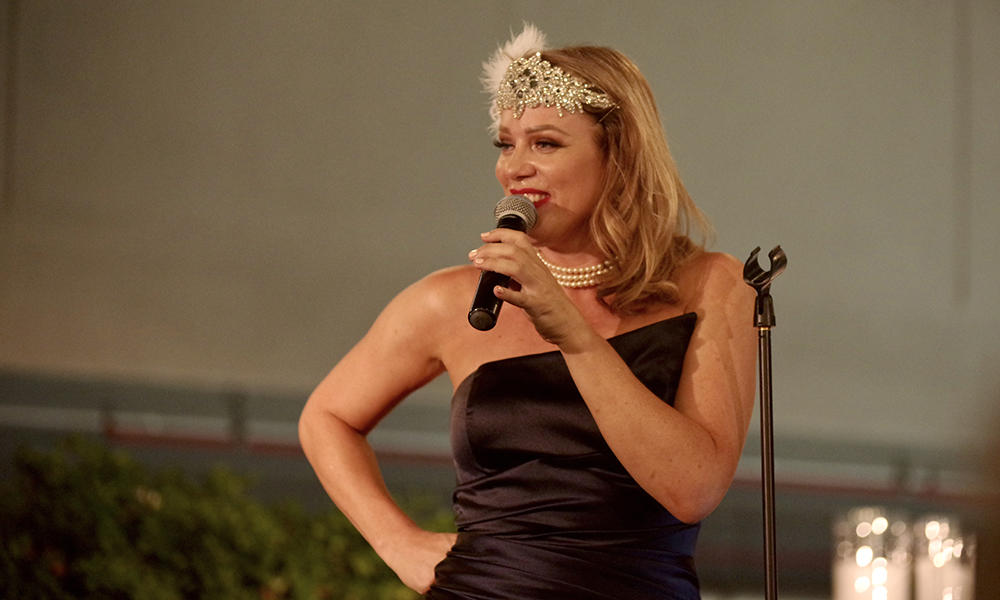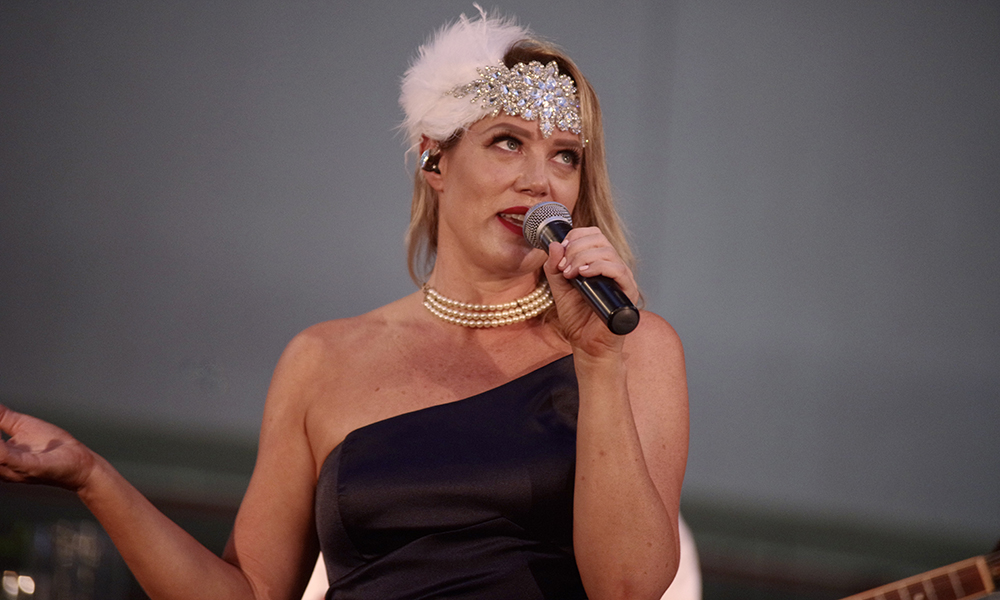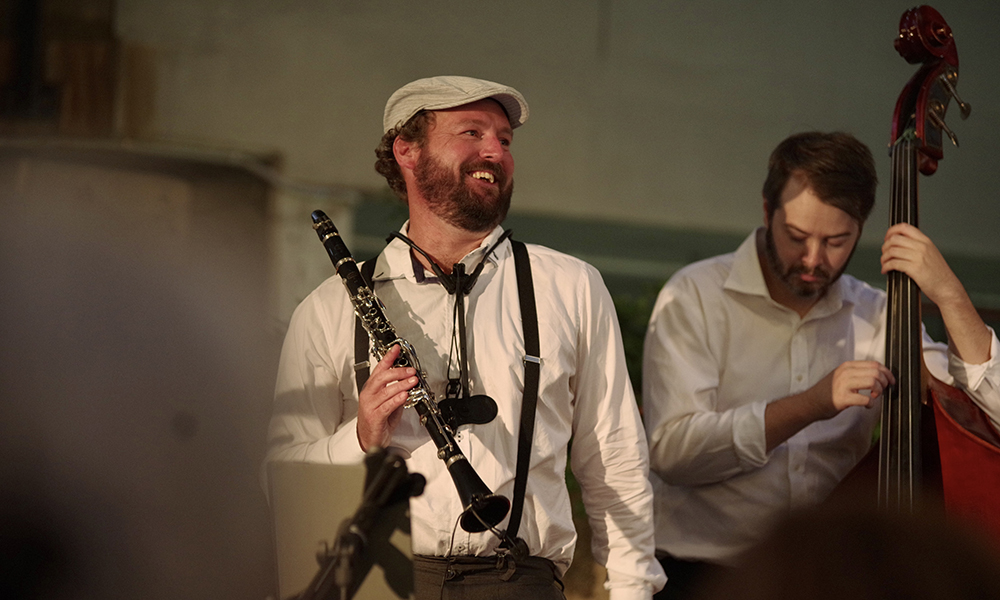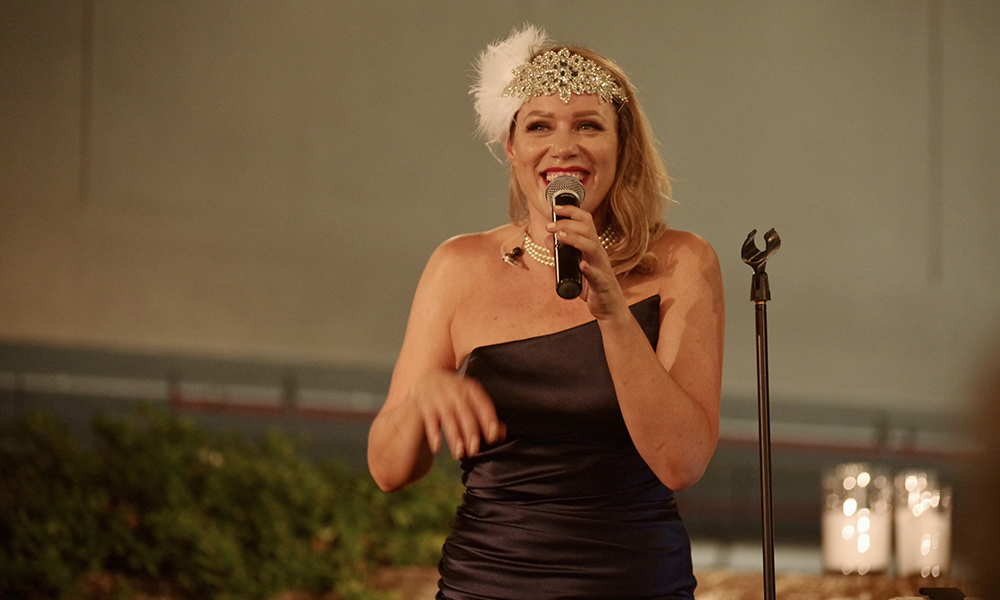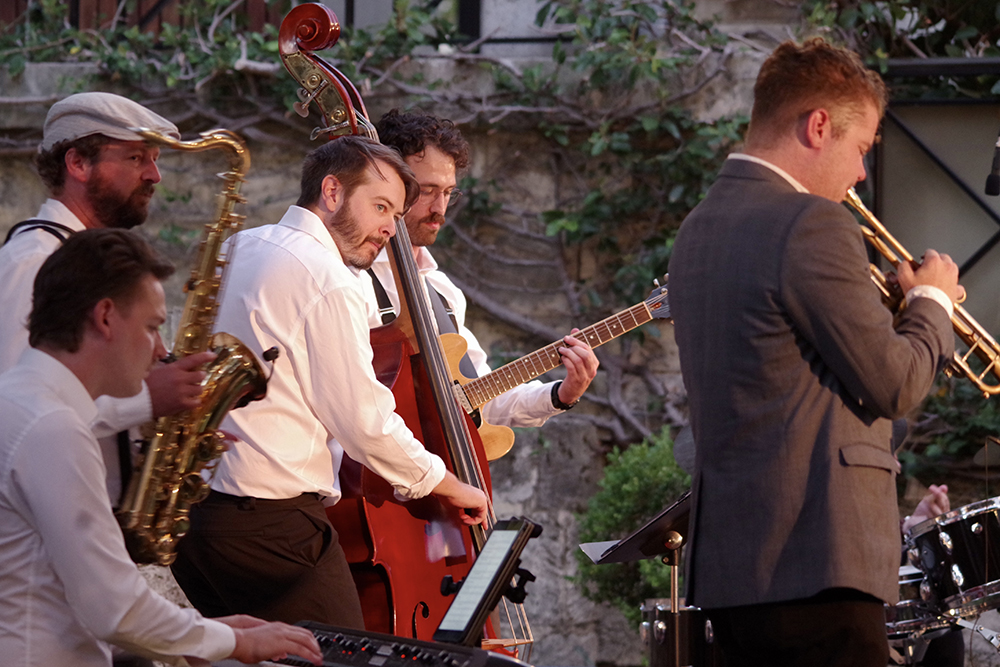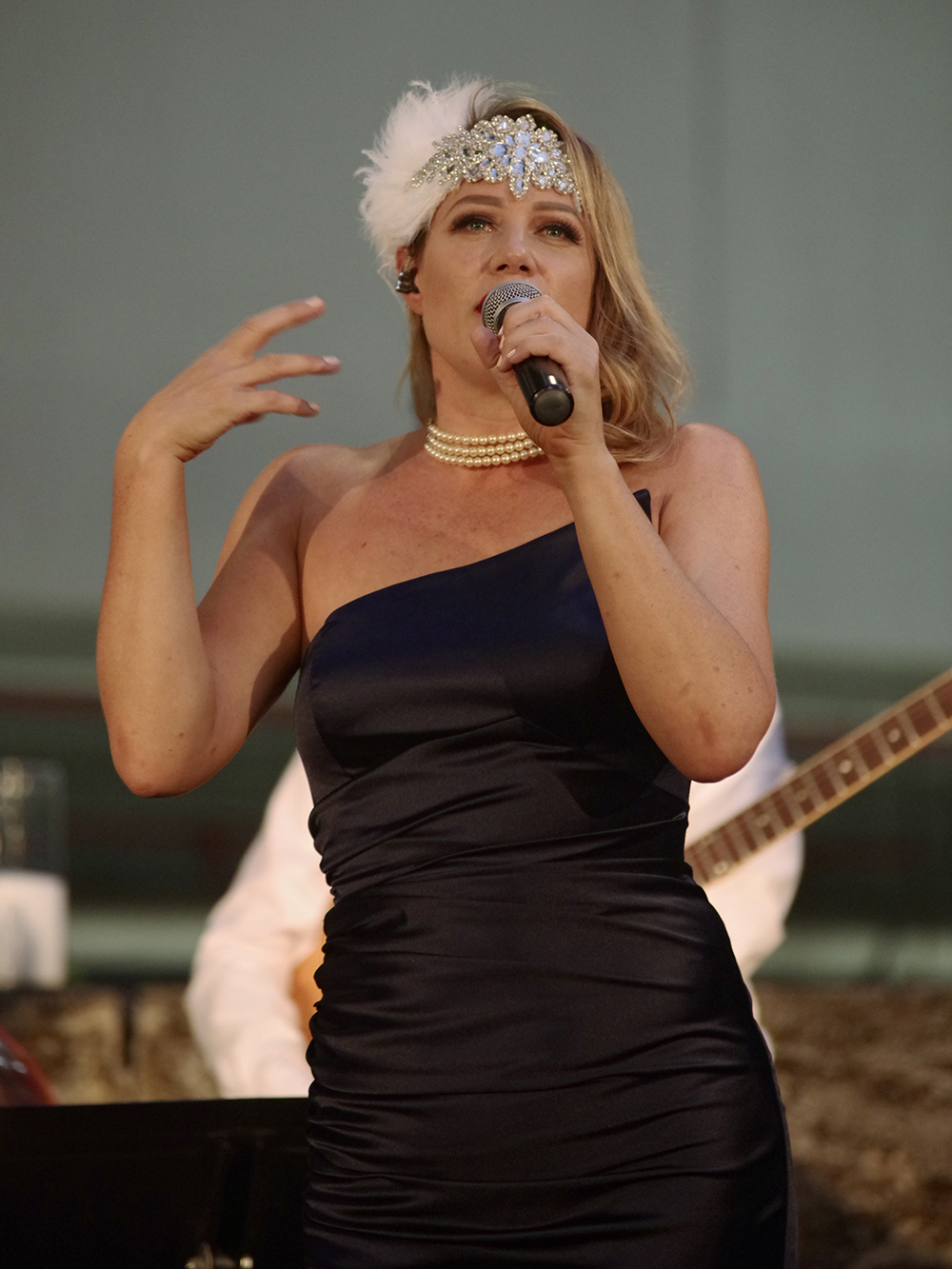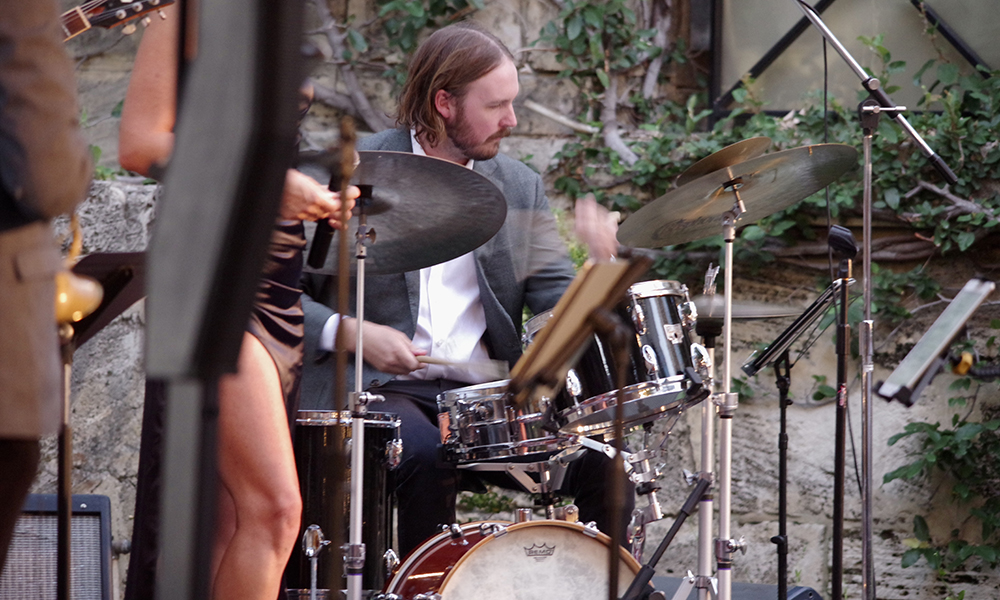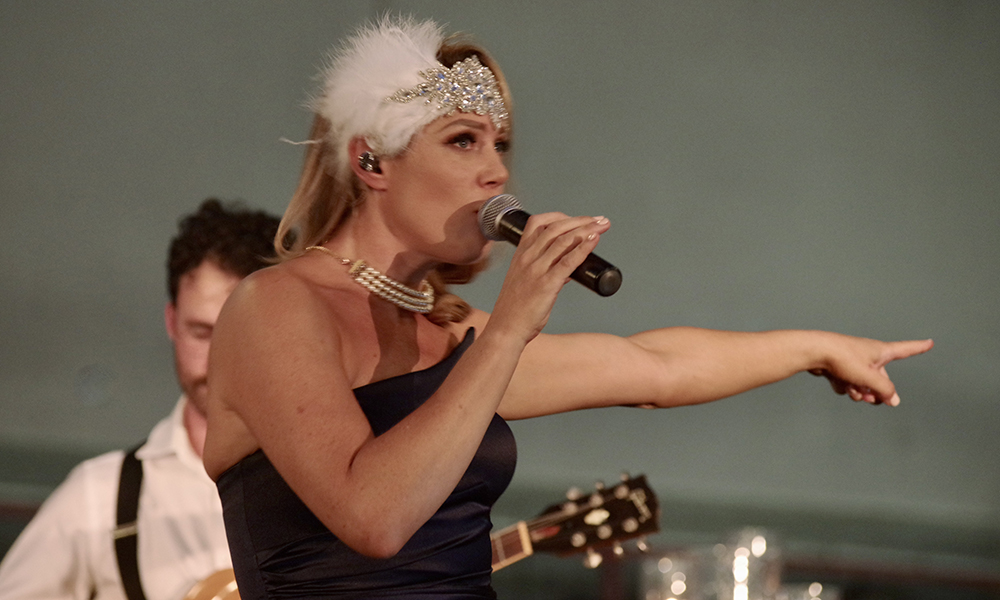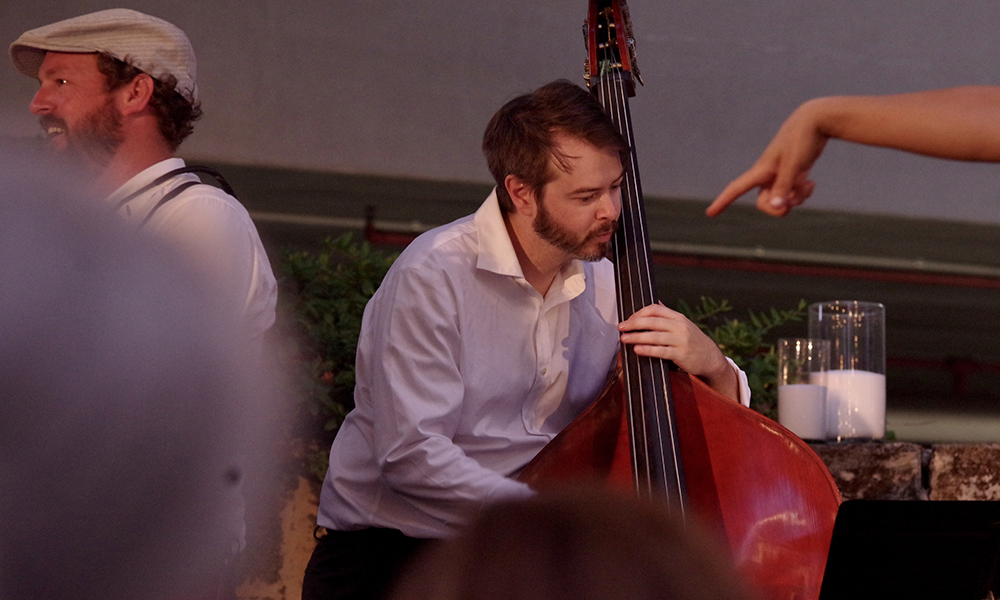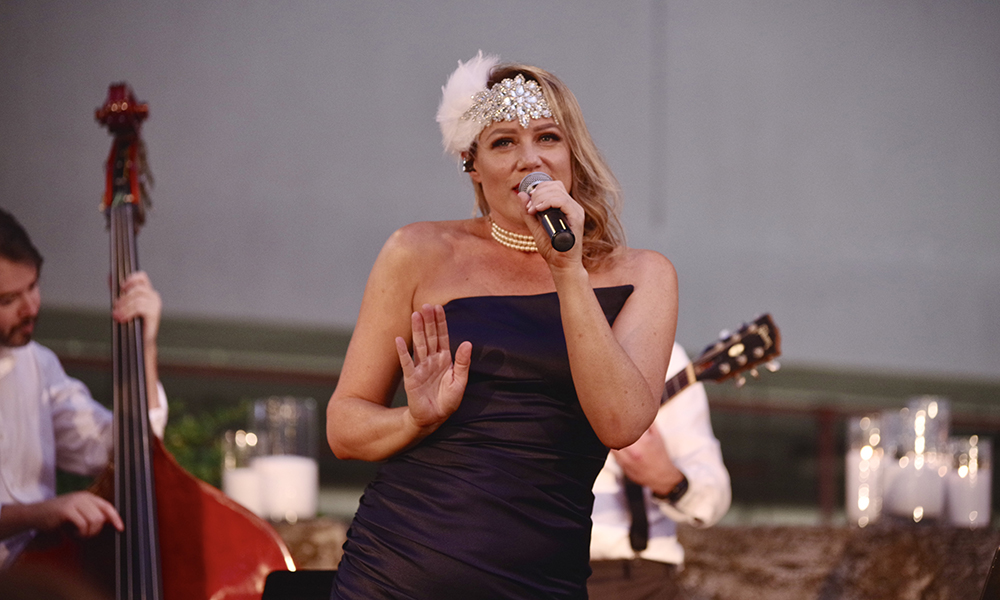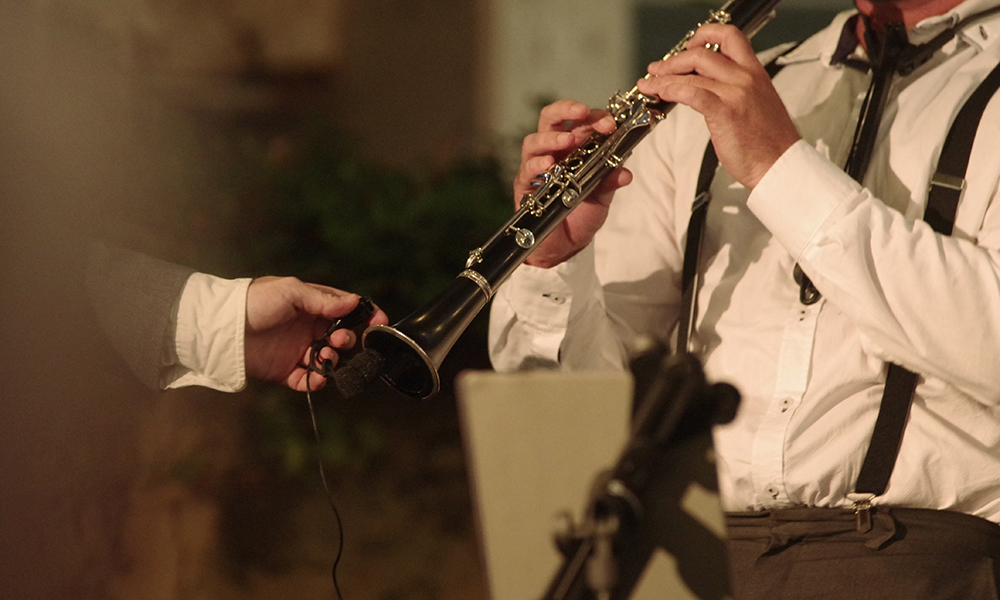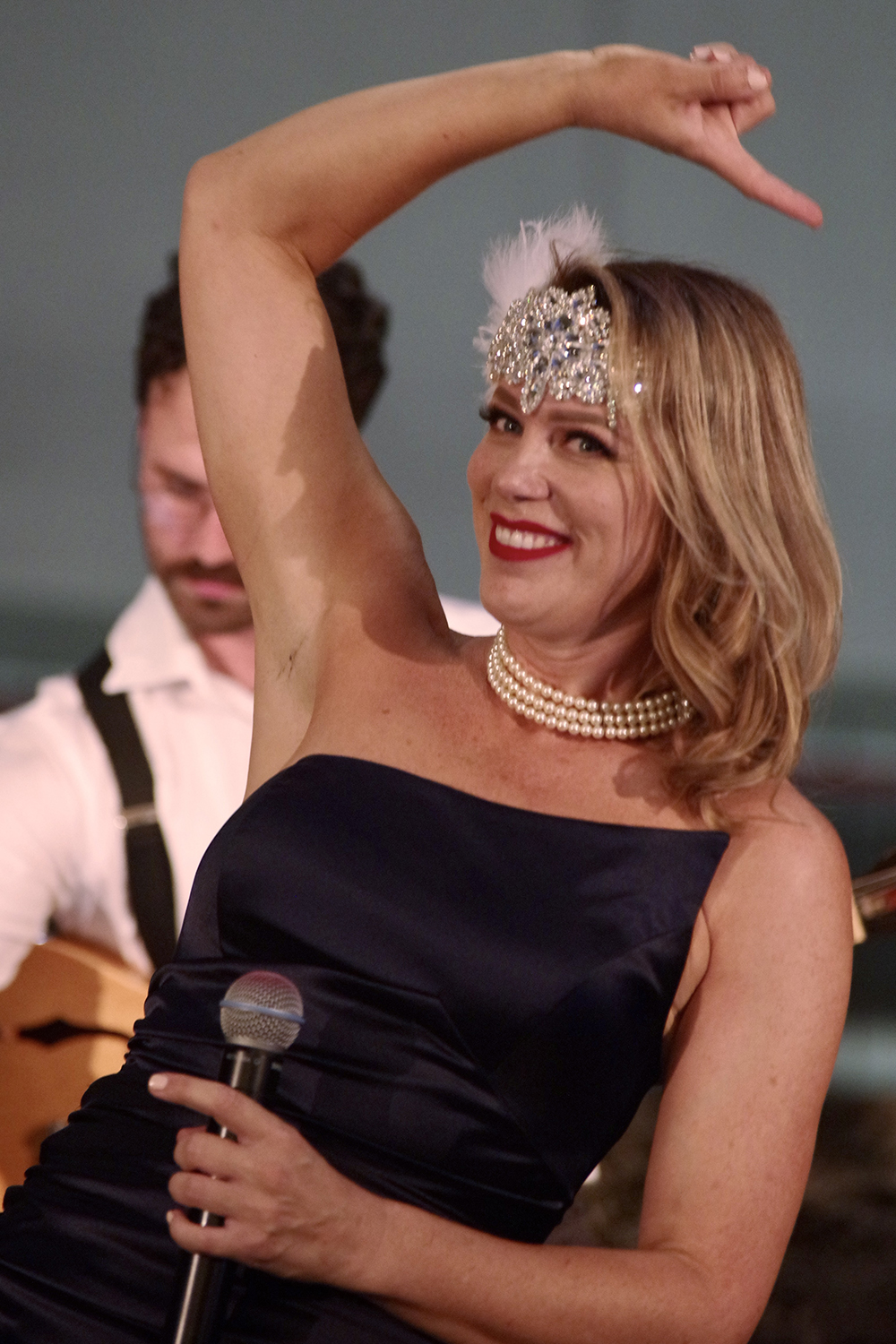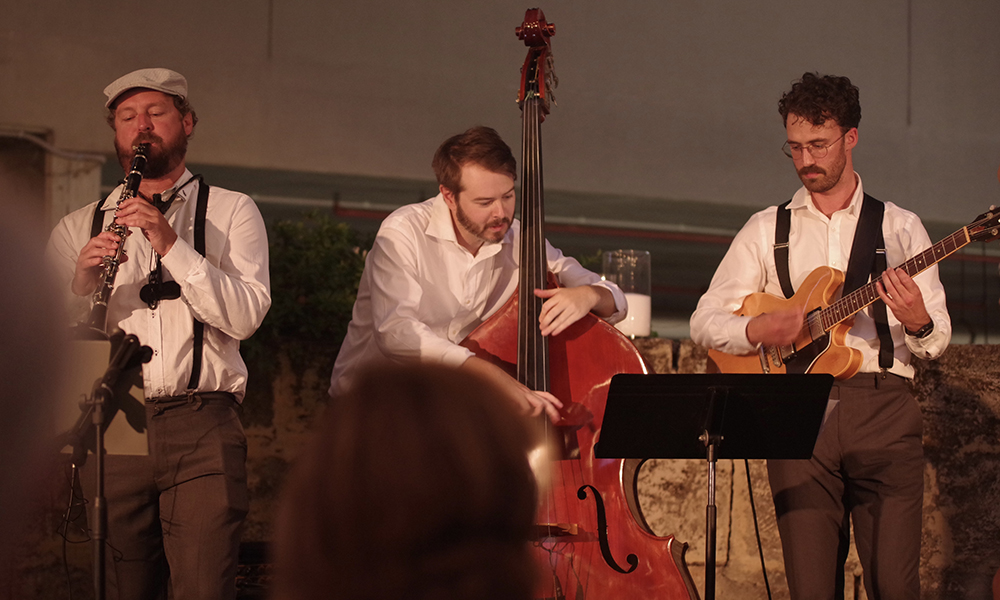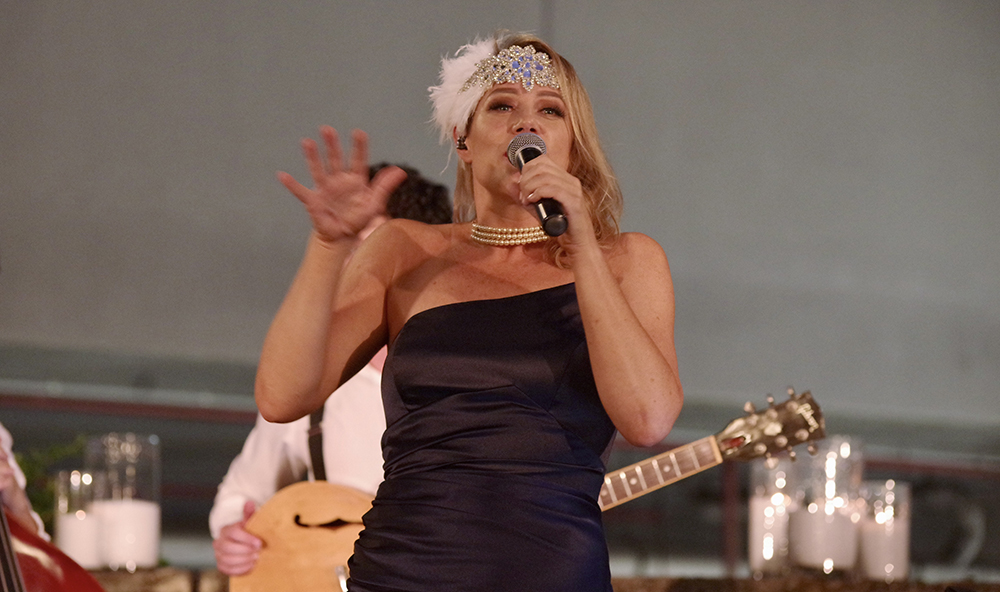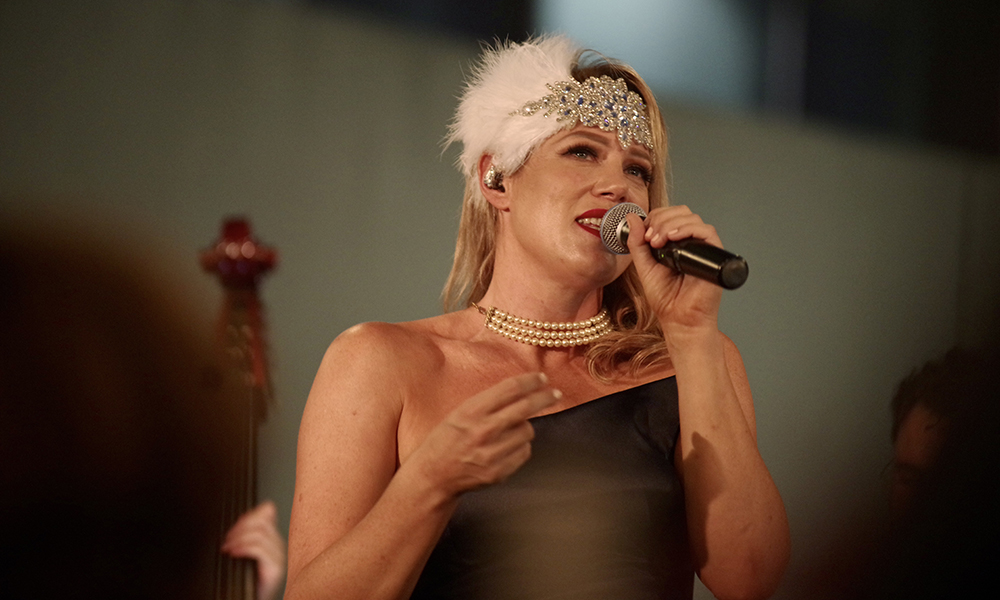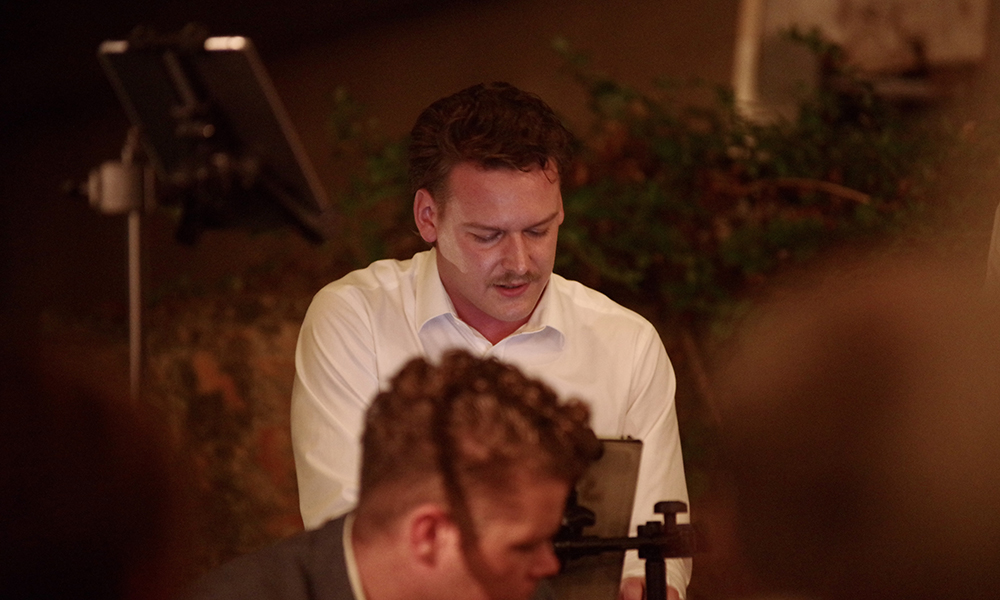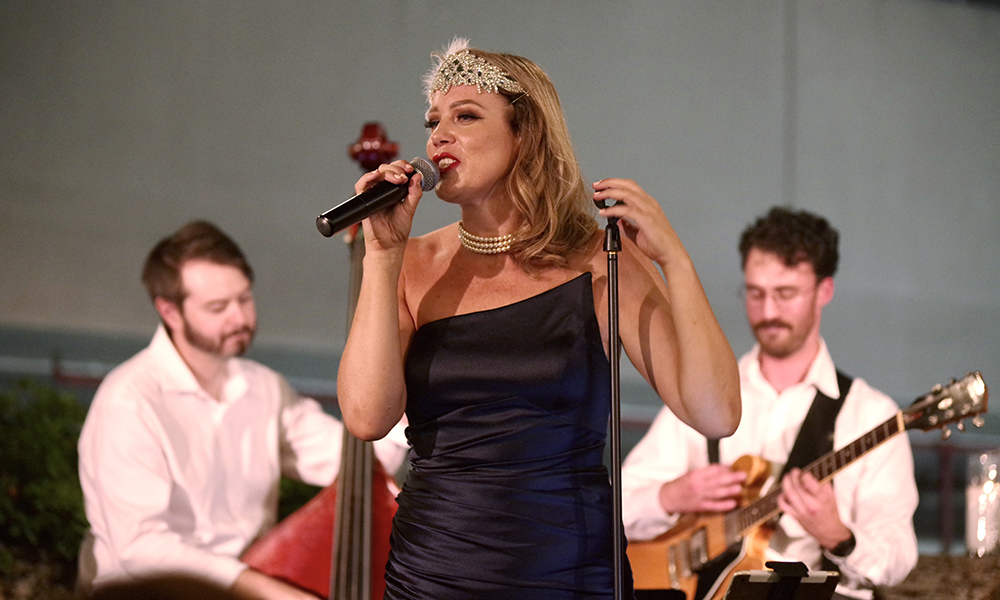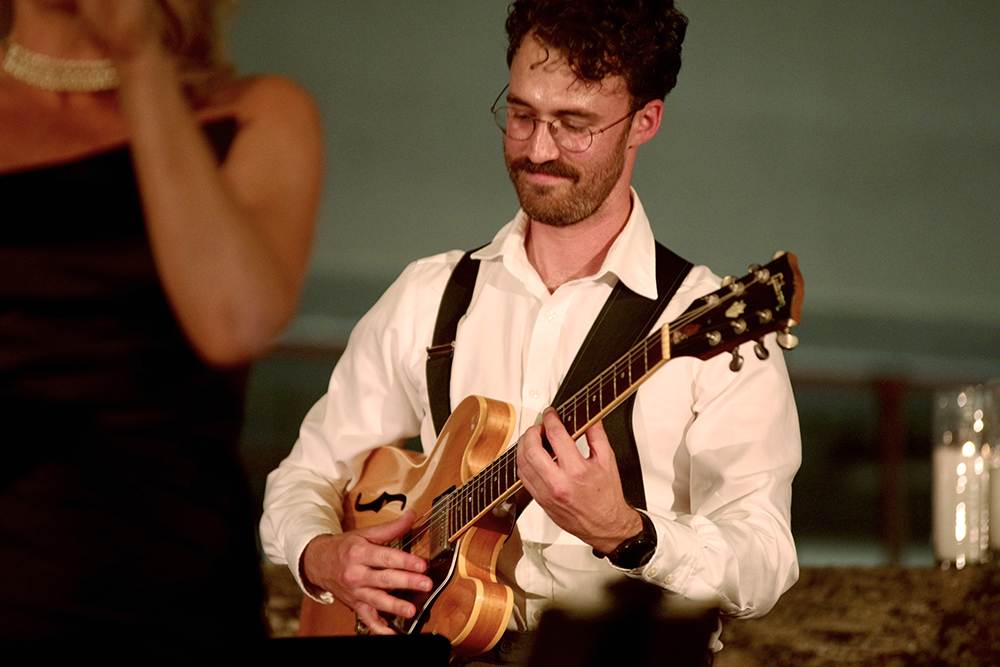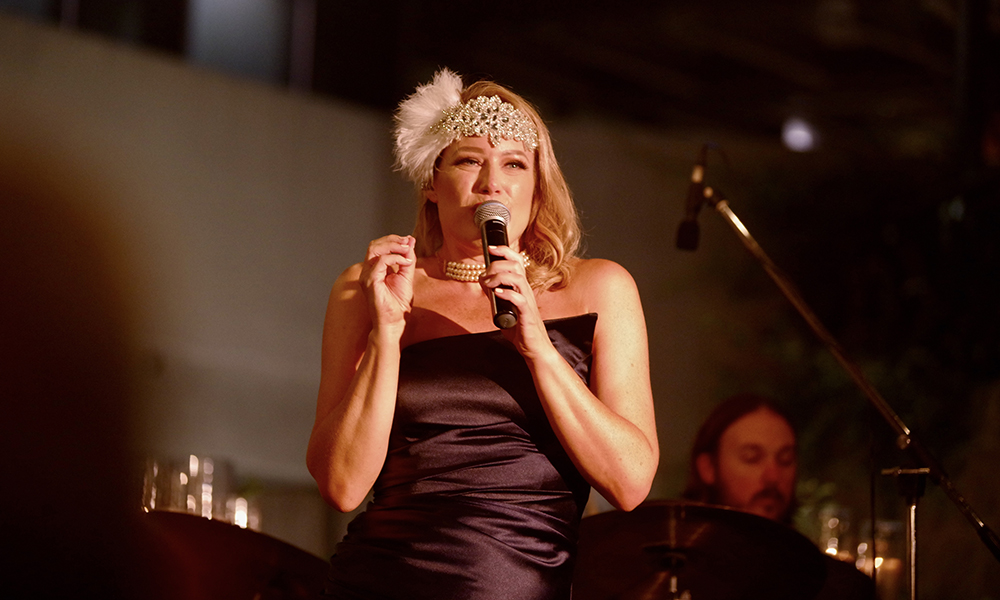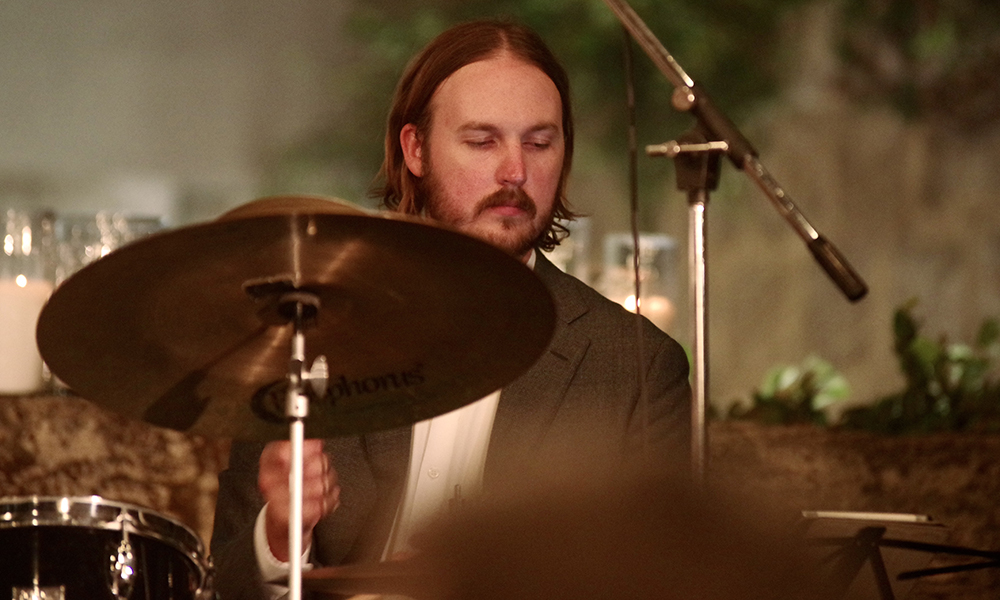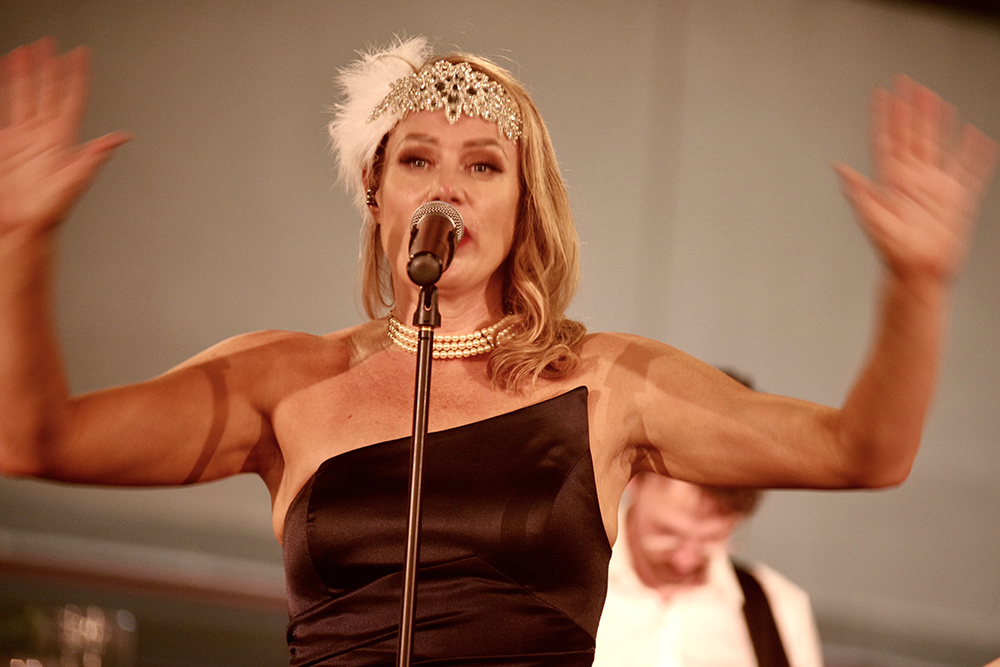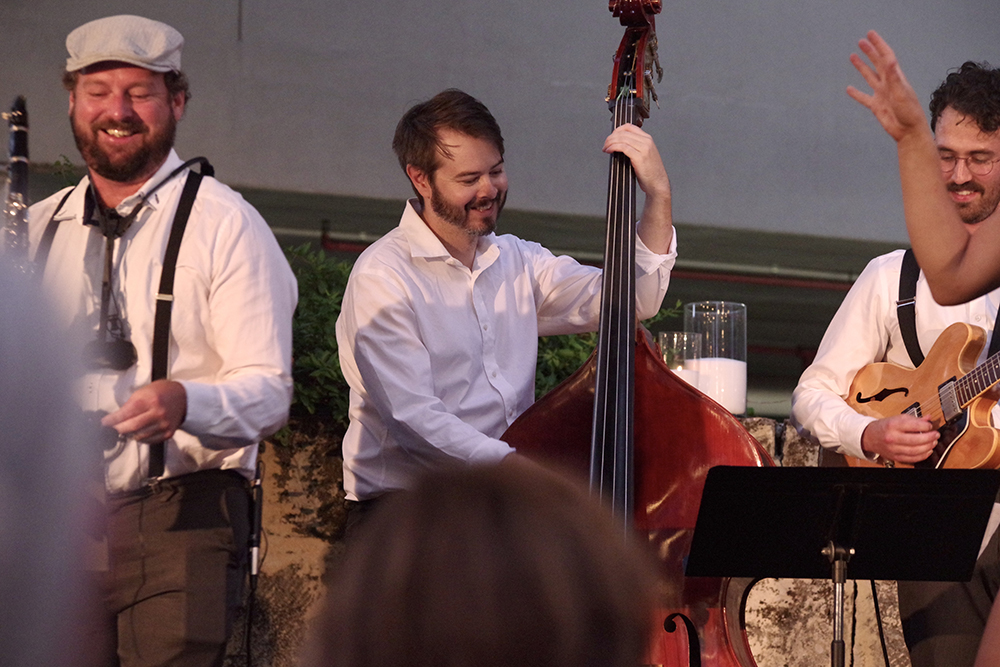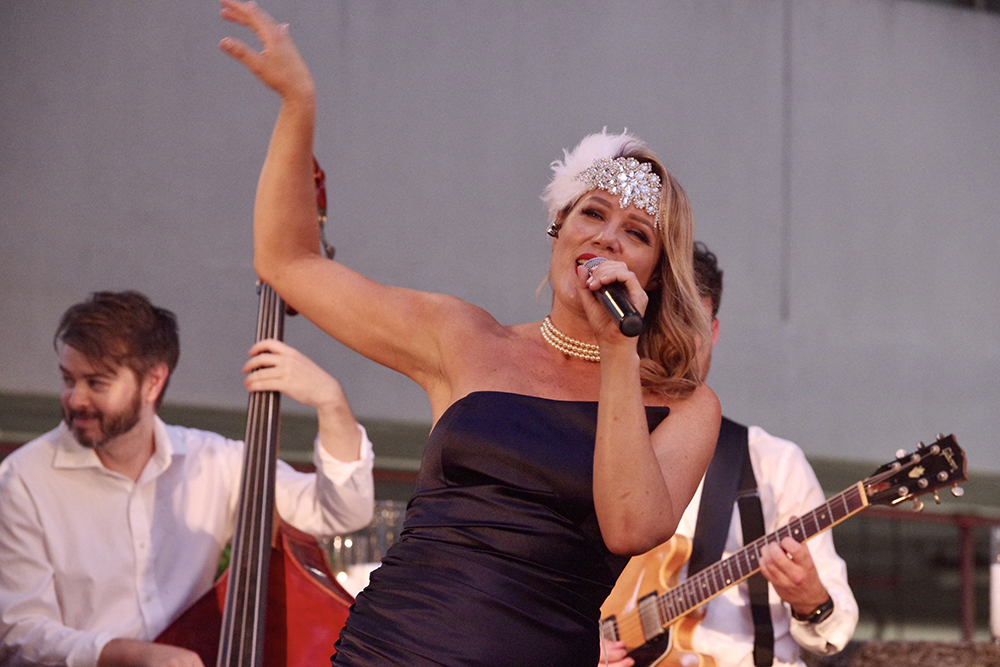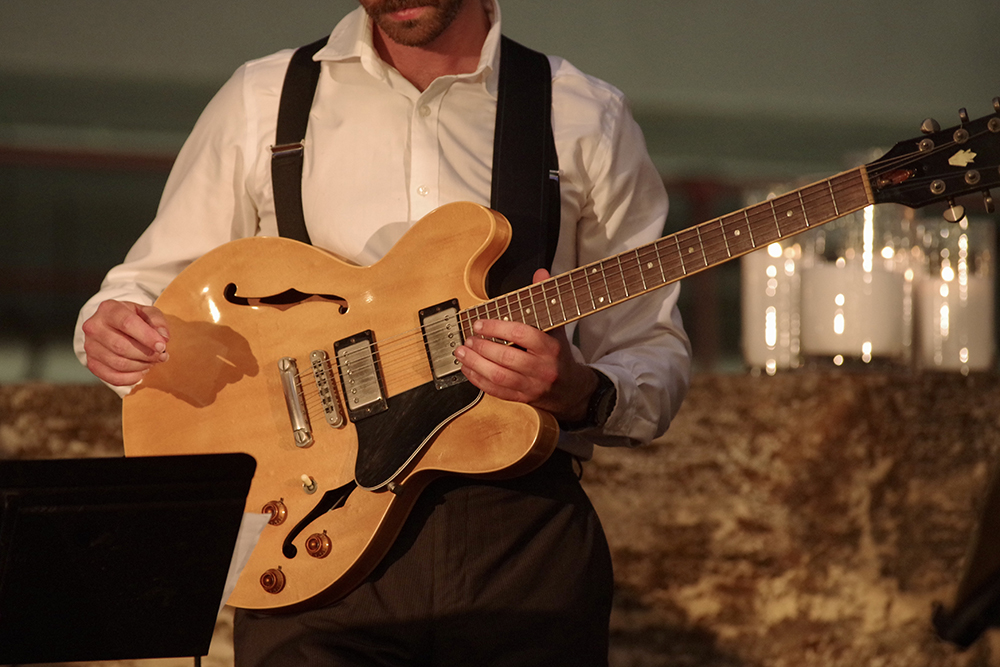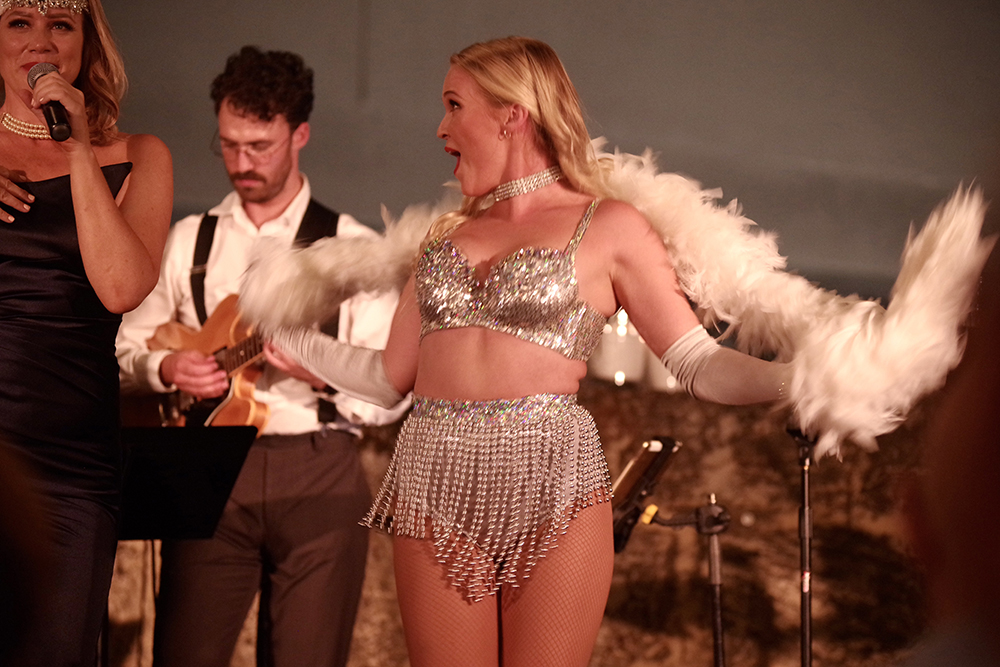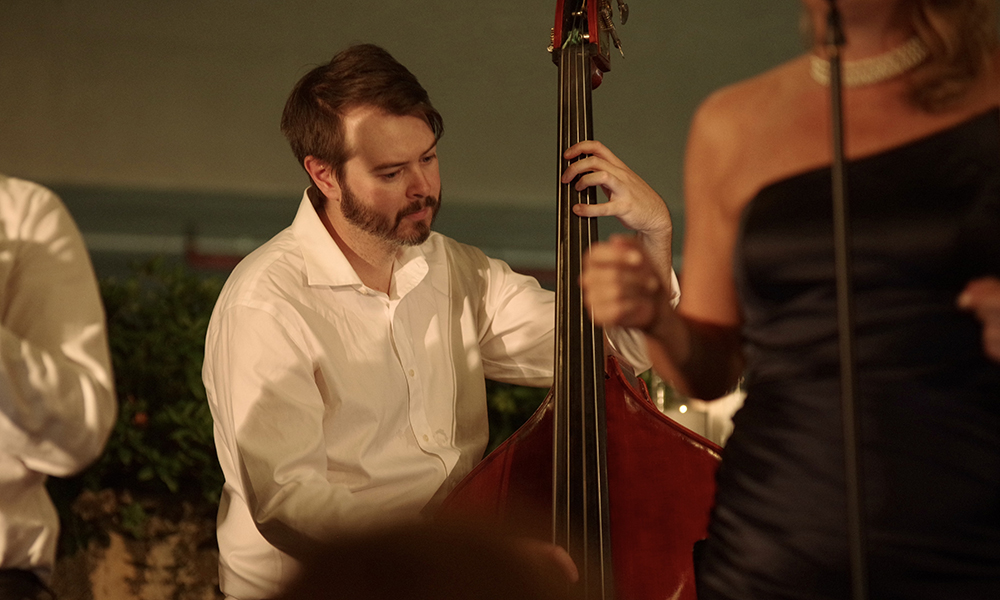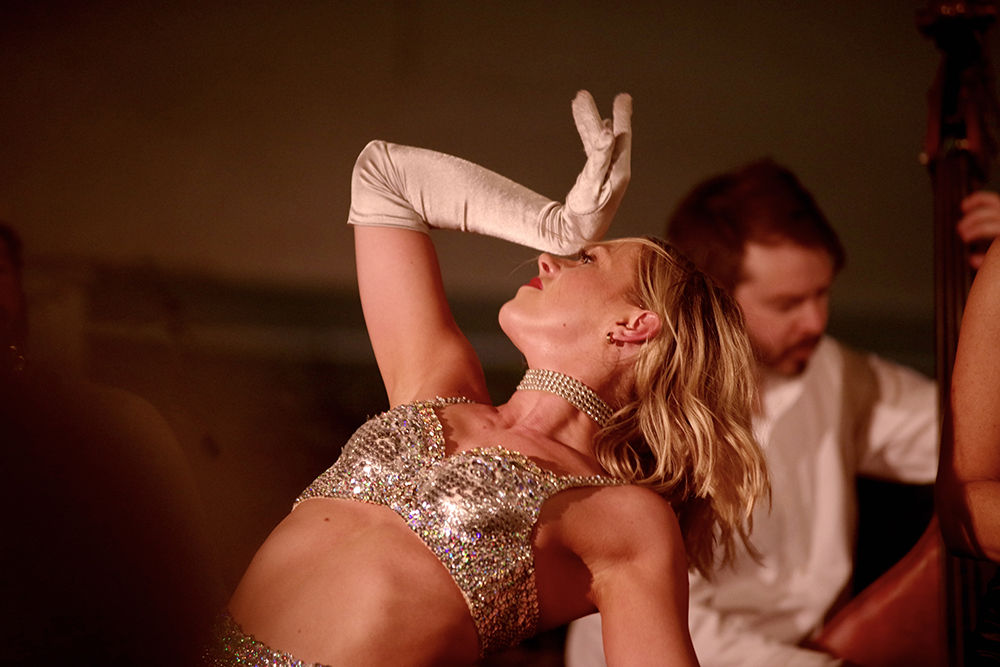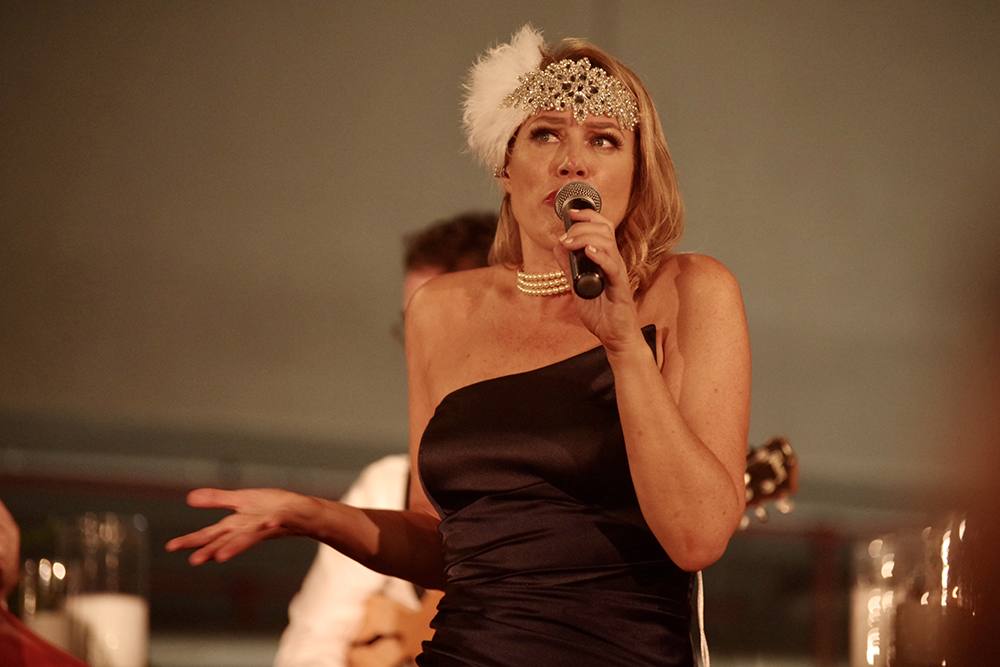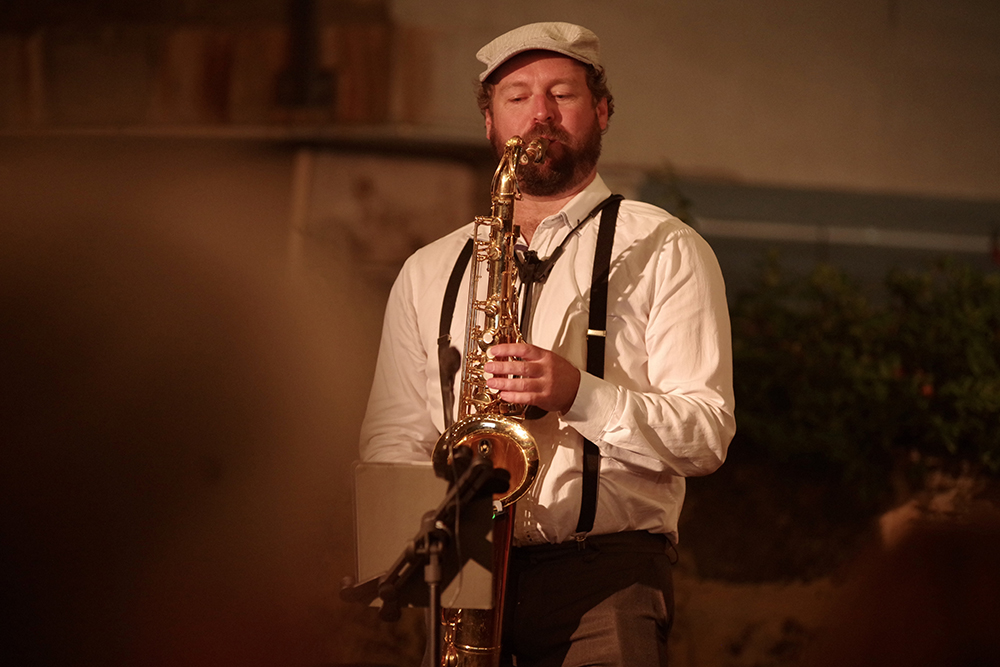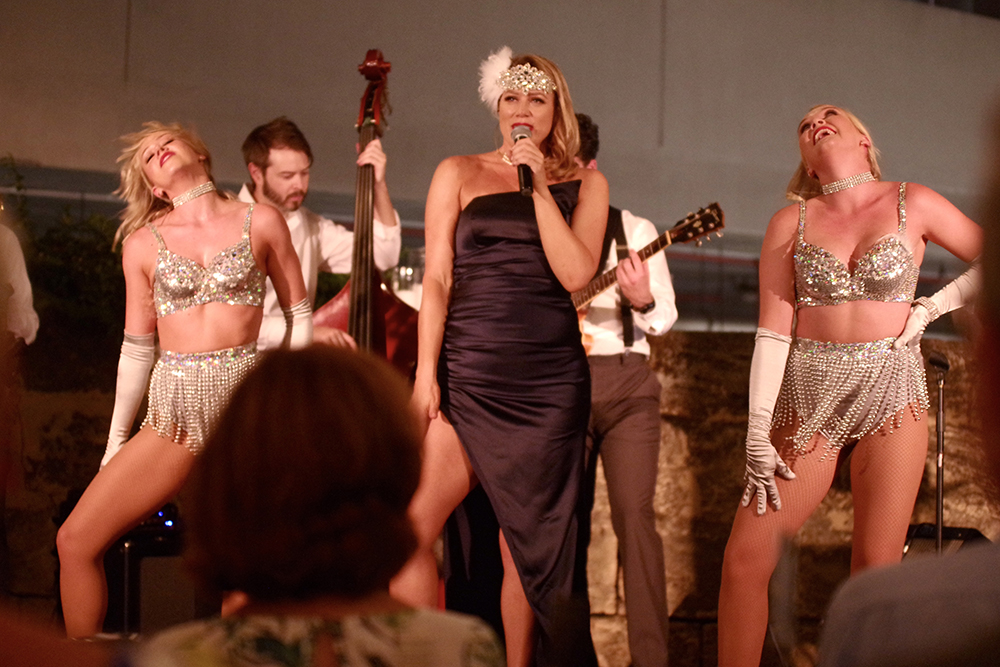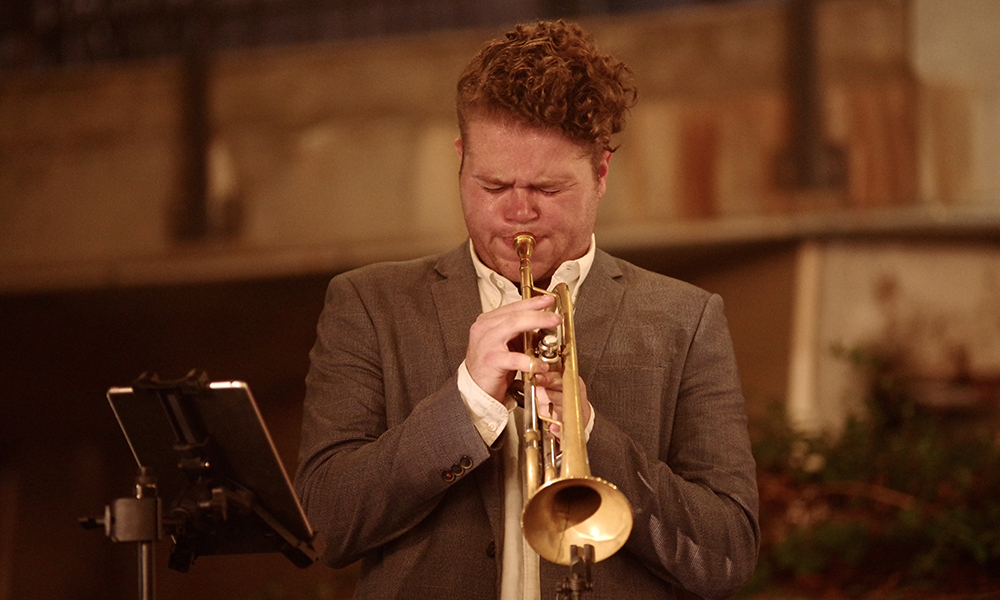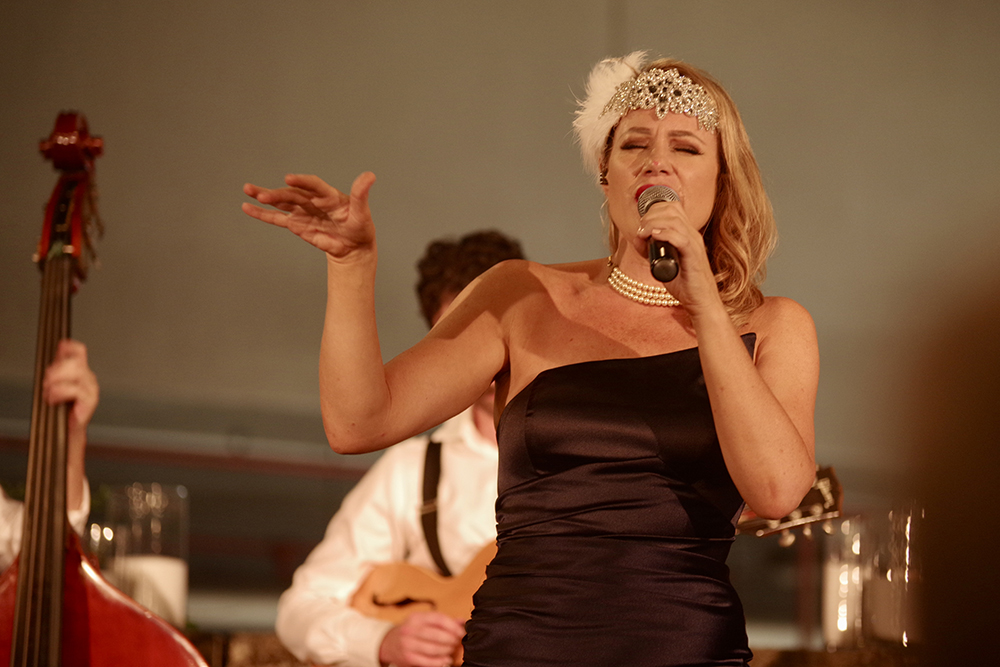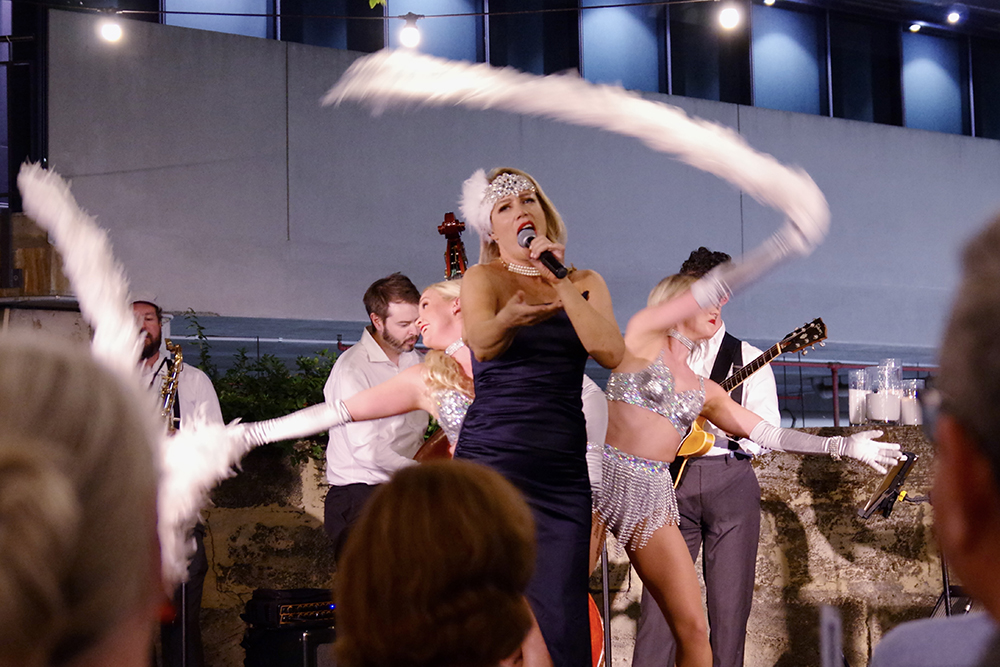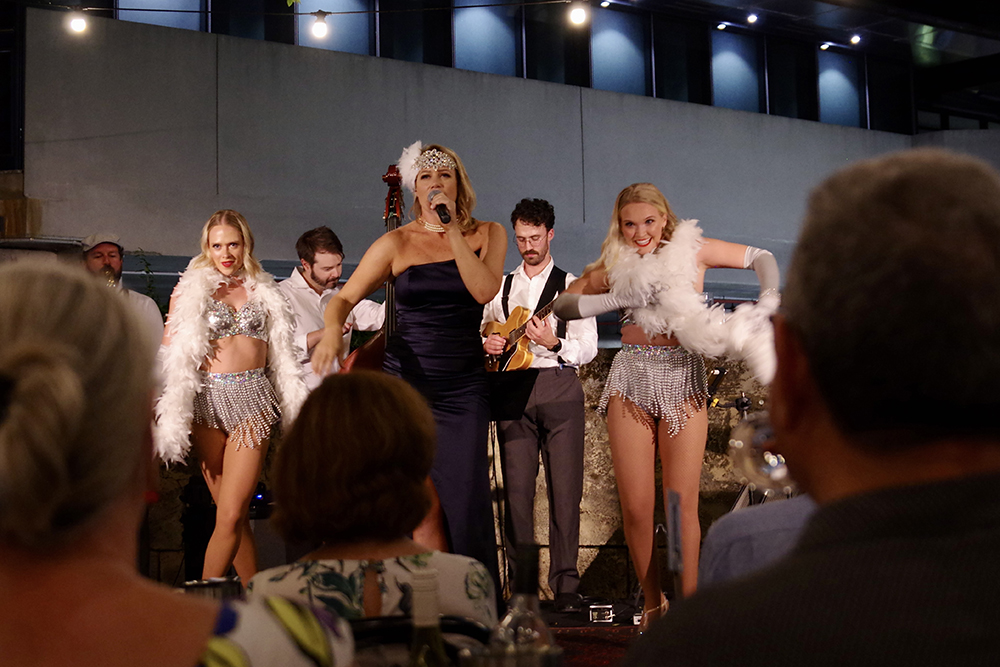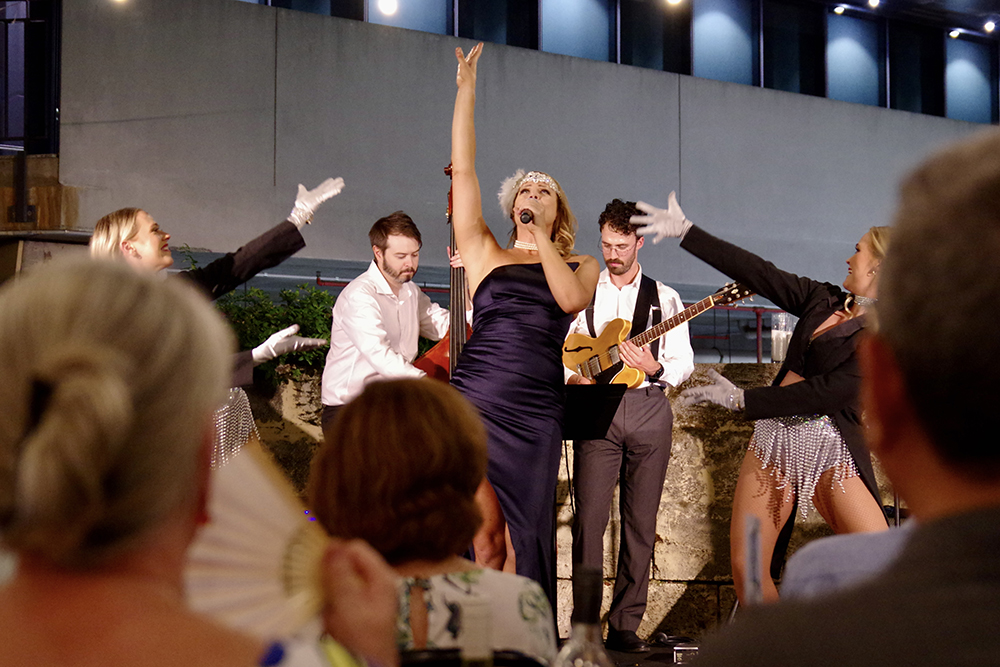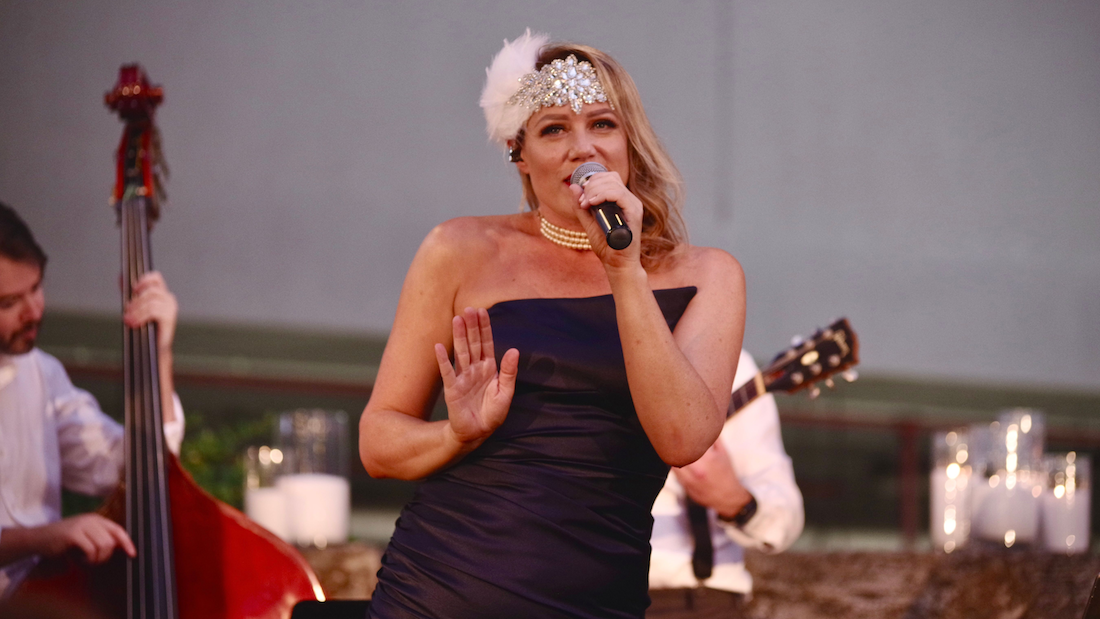
Review: 1920s Cotton Club REIMAGINED with Catherine Summers at Lamont’s Bishops House
1920s Cotton Club REIMAGINED with Catherine Summers at Lamont’s Bishops House
Wednesday, January 31, 2024
Bishops House is a colonial mansion that sits in the shade of the financial towers at the top of the Terrace. Its lush backyard rose garden peaks through to the giant mutant Dalek that is the QV1 building. This juxtaposition of the nineteenth and twenty-first centuries is slightly surreal, but, on a hot summer’s night, it makes for a cool spot to listen to some very smooth Cotton Club jazz.
But then, there was a surreal twist to the music too: it sounded 1920s, but the songs themselves came from the pop era—the 1960s through to now. Chanteuse Catherine Summers cleverly brushed this contemporary repertoire with a Cotton Club coating. She and her simmering jazz band did both the songs and the style proud. Heck, in the second set, they bought on two dancing girls in silver-beaded bikinis to add even more sparkle to this already shining show—the bubbles on the Prosecco.
Summers’ ensemble is composed of a selection of seasoned Perth players: Matt Smith on trumpet, Alistair McEvoy on sax and clarinet, Jackson van Ballegooyen on keys, Vaughan Jameson on guitar, Zac Grafton on double bass and Dan Harrison on drums.
After a long round-robin intro in which each player paraded their chops in the order above, with McEvoy on sax, they segued effortlessly into Amy Winehouse’s Rehab. Summers enlisted the audience for a rousing round of ‘no—no—no’. Well, eventually it was rousing; at first, everyone had to shake off the heat.
They followed this with two Lana Del Rey tunes: Young and Beautiful and Maybe. On the second, Smith and McEvoy harmonised their horns (trumpet and clarinet) in the characteristic Cotton Club way. When Summers joined them with her beautiful melody line, they melted together like a rich chocolate sauce.
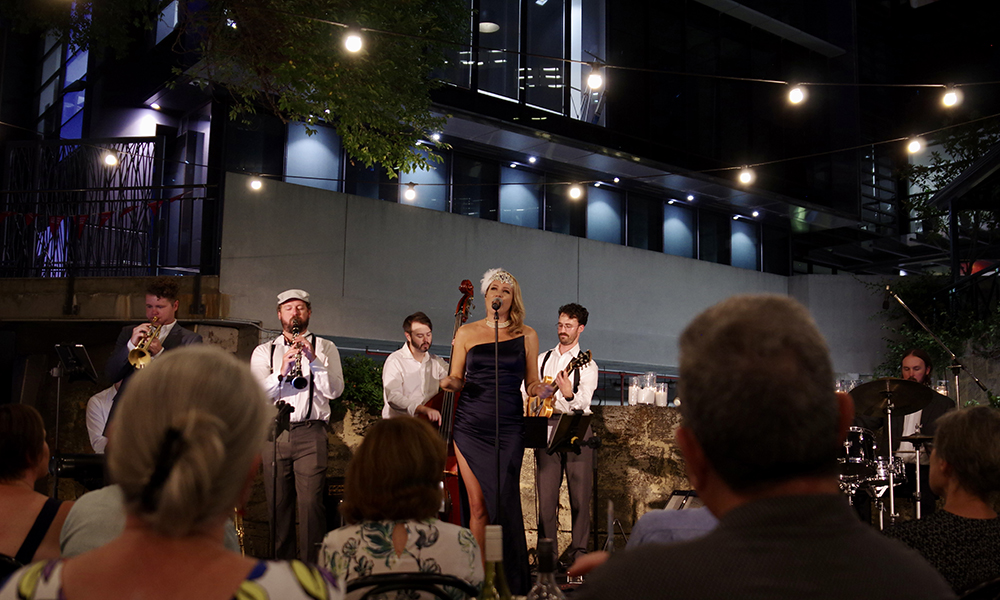
Catherine Summers
On the next song, the Bill Withers' classic, Ain't No Sunshine, they took this troika of melodic lines to the next level and engaged in a contrapuntal duel. The three of them ran off in different directions, leaving the rhythm players to harmonically ground the song. What seemed like a safe evening of easy listening suddenly acquired a dangerous edge. Nice.
After a ragtime rendition of A Hard Day’s Night that slid into Adele’s Rolling in the Deep, the three melodists engaged with gusto in another duel: Duran Duran’s Ordinary World. This proved to be the highlight of the first set. Not only were the horns and voice running against each other, but the guitar and keys got in on the act too. At any moment, it could have blown apart, but Grafton and Harrison, with their grounding bass and percussion, managed to keep it on this side of calamity. A spectacular turn, it surprised the players themselves—in their first outing of this arrangement, they were flying by the seats of their pants.
Summers has a warm, quirky and sensual stage presence. Her humour and exuberance are charming; she always finds the funny side in any moment. A case in point was when she deftly turned a clarinet microphone malfunction into a running joke, circumventing McEvoy’s obvious frustration by bringing the audience on side. And she cosied up for the part in a suitably dangerous dress of amethyst silk and a classic Flapper’s rhinestone tiara with white feathers. If it hadn’t been so hot, the men would have donned tuxedos and completed the Cotton Club look. But not on a forty-degree day—white open-necked shirts ruled. A pity the weather was against it: Smith would have looked dapper in a white band-leader’s tux.
This stylish ensemble wrapped up the first set with two classic 1960s pop songs: an almost unrecognisable but gorgeous rendition of Marvin Gaye and Tammy Terrell’s Ain't No Mountain High Enough and a stirring account of Joe Dassin’s Les Champs-Élysées.
Before hauling the audience in for some more choral embellishment on the Dassin, Summer’s described how, after crossing the Atlantic and conquering the Moulin Rouge cabaret scene, Paris appropriated jazz as its own. The cheeky French. The Cotton Club crew didn’t mind the extra attention—it made the music more respectable and enabled it to reach a wider audience—but vehemently claimed the form as their own.
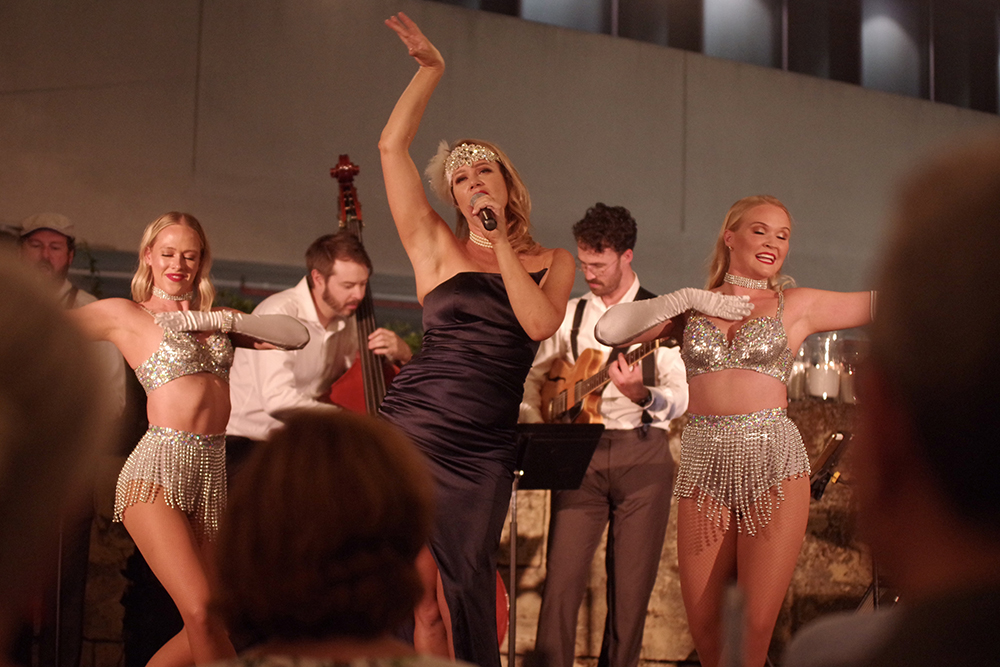
Catherine Summers
Summers has been presenting her Fringe World shows at Bishops House for the past nine years. In that time, the format has evolved. It took her a few seasons before settling on the REIMAGINING formula—the earliest shows were stylish but straight presentations of jazz and pop standards.
The REIMAGINING concept is both intricate in its musical exploration and smart marketing. It follows the Fringe World musical formula of themed concerts. A common thread unites the songs, while a classic narrative arc—beginning, middle, and end—shapes the show. The formula is refreshing—a clever way to both turn a gig into a concert and give well-known songs an original twist.
Summers teases this out in her inter-song stories. In this show, she told the tale of the Cotton Club: where it came from socially and historically, where it led, and, most significantly, how it engaged with and advanced the suffragette movement. The Flappers were among the first women to kick up their liberated heels.
The second set jumped back and forth between this formula and straight Cotton Club jazz. It began with a step into the Club itself when two dancing girls, Danny and Ashleigh, joined the ensemble for a medley of jazz standards—Sweet Georgia Brown, Great Big Spender, Cabaret and All That Jazz. With their occasional feather boas, the dancers shimmied up to Summers, sometimes fawning to her—‘all hail the queen'—and sometimes engaging her in mildly comic three-part choreography. Summers lapped it up while chastising the audience to “keep it clean!”
In a flourish of applause, the dancers departed, and the band transitioned back into the main theme with Beyonce’s Crazy in Love. The arrangement was pulled from the soundtrack of Baz Luhrmann’s Great Gatsby, while its feel was reminiscent of another 1920s-set movie, The Sting.
It then went from Gatsby to Taylor Swift (I Knew You Were Trouble), then back to a lush rendition of the Joseph Kosma jazz standard Autumn Leaves. Here, McEvoy provided a shimmering sax intro that Smith followed with his trembling trumpet and Summers capped with a syncopated vocal. They then broke into another round-robin, allowing Van Ballegooyen and Jameson to shine out from behind the horns, before the song came to an end with a haunting vocal figure.
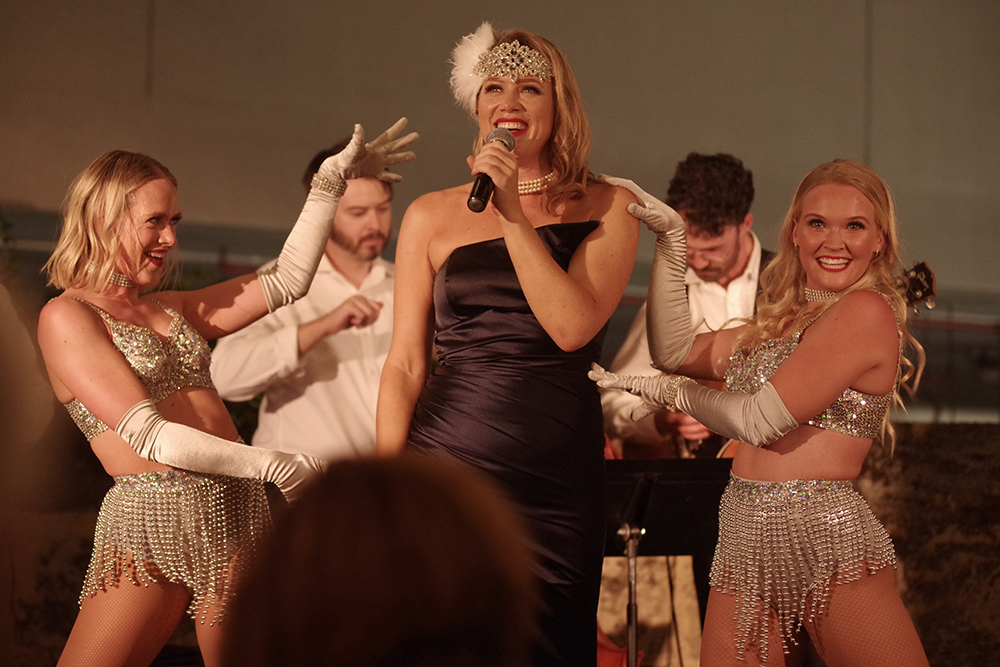
Catherine Summers
Summers is an extraordinary singer; she looks for the offbeat emphasis and unusual lines that weave through the rhythms of a song. Her syncopation is very sophisticated—a few years ago she delivered a version of Summertime that was refreshingly new, no mean feat with such a well-sung song. At times, she skips a fine line between discord and off-pitch. She closed the next tune, Tears for Fears’ Everybody Wants to Rule the World, with a note-perfect restatement of the hook that slipped in a dissonant edge on the very last beat. This left the song hanging and broke your expectations. It is a very fine line, but Summers manages to dance her way along it.
And on this number, the band completely complemented her style. Again, they broke the tune apart and moved into their own melodic and rhythmic domains. Smith led them off with a complex trumpet figure that was more American minimalist than Cotton Club. An accomplished composer in his own right, Smith shone out from this gifted band. Their de facto leader, this is another role to which he is no stranger—if you ever get a chance to see the Matt Smith Sextet, take it.
Summers brought the night to a close with a faux encore. She warned us two songs ahead to save herself the palaver of leaving the stage and being applauded back—it was just too hot. She dedicated the final song, ABBA’s Thank You for the Music, to the audience. A rousing anthem, it captured the sentiment and theme of this very smooth and very stylish show.
Walking away from the lush rose garden, the hot summer’s night had acquired a cool and sophisticated edge. Just what Perth needed last week.
Catherine Summers’ 1920s Cotton Club REIMAGINED plays at Lamont’s Bishops House, Tuesday to Thursday, until February 15. Grab a table if you can. Tickets are available through Fringe World.
IAN LILBURNE
Photos by Alan Holbrook

